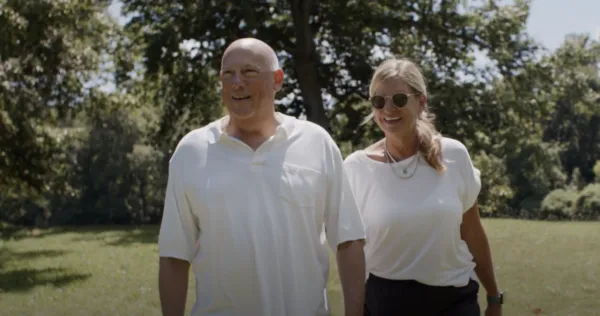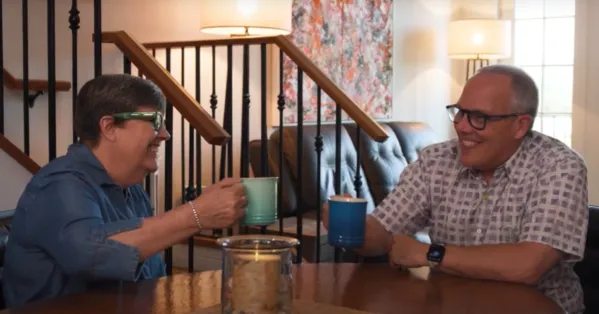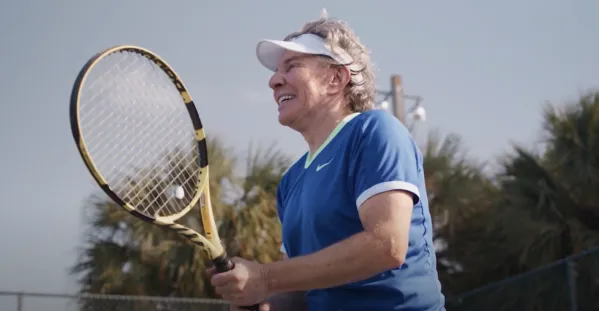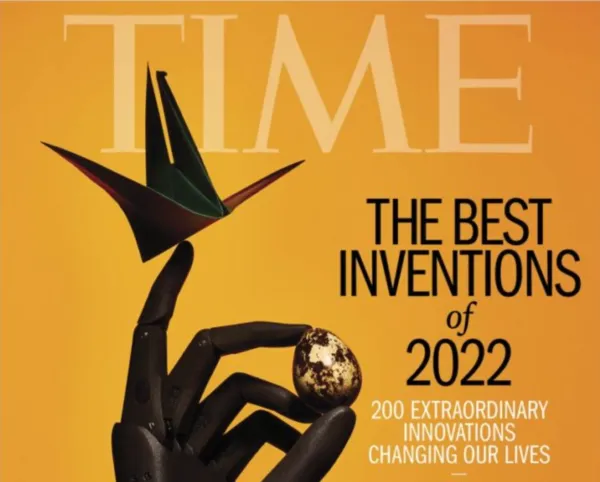Please note that to be eligible for the test, you must be 50 years or older.
Galleri® goes further with your cancer screening
Adding a multi-cancer early detection test to your cancer screenings allows you to go beyond what's currently possible.1-4
A single blood test. Over 50 types of cancer identified in a clinical study through a shared cancer signal.4,5 Only Galleri redefines what’s possible in cancer screening.
The Galleri test does not detect a signal for all cancers and not all cancers can be detected in the blood. False positive and false negative results do occur.

The Galleri test does not detect a signal for all cancers and not all cancers can be detected in the blood. False positive and false negative results do occur.
Why is early detection important?
The Galleri test can increase your chance of finding a signal associated with cancer early, when used in addition to single cancer screenings.1

Only 5 recommended cancer screening tests exist today2:
breast, colorectal, lung (for those at risk), cervical, and prostate

About 3 out of 4 new cancer cases and cancer-related deaths
will be due to cancers with no recommended screening.5
The Galleri test looks for a signal associated with active cancer and does not predict your future genetic risk for cancer.
What is the Galleri test?
Galleri is the first-of-its-kind multi-cancer early detection test—a test that looks for a signal shared by more than 50+ types of cancer with a single blood test.1 It is a screening test and does not diagnose cancer, further testing is required to confirm cancer.

Who is Galleri for?
Age is the biggest risk factor for cancer. In fact, adults over age 50 are 13 times more likely to have cancer compared to people under the age of 50.7 Cancer risk increases for everyone as they age regardless of family history—only 5% to 10% of cancers are inherited.6,7
The Galleri test is recommended for use in adults with an elevated risk for cancer, such as those aged 50 or older. It is intended to be used in addition to and not replace other cancer screening tests your healthcare provider recommends.
Talk to your provider about your risk for cancer, and whether the Galleri test is right for you.
There are two ways to request the Galleri® test
The Galleri test is available by prescription only and must be ordered by a healthcare provider. You can request the test through your healthcare provider or online through an independent telemedicine provider.
Talk to your healthcare provider
At your next wellness visit, ask your healthcare provider about Galleri. Our discussion guide can help start the conversation.
Request the test online
You can also request the Galleri test online through an independent telemedicine provider.
Learn how screening with Galleri has made a difference for these patients
Resources
The Galleri test is recommended for use in adults with an elevated risk for cancer, such as those aged 50 or older. The Galleri test does not detect all cancers and should be used in addition to routine cancer screening tests recommended by a healthcare provider. Galleri is intended to detect cancer signals and predict where in the body the cancer signal is located. Use of Galleri is not recommended in individuals who are pregnant, 21 years old or younger, or undergoing active cancer treatment.
Results should be interpreted by a healthcare provider in the context of medical history, clinical signs and symptoms. A test result of No Cancer Signal Detected does not rule out cancer. A test result of Cancer Signal Detected requires confirmatory diagnostic evaluation by medically established procedures (e.g. imaging) to confirm cancer.
If cancer is not confirmed with further testing, it could mean that cancer is not present or testing was insufficient to detect cancer, including due to the cancer being located in a different part of the body. False-positive (a cancer signal detected when cancer is not present) and false-negative (a cancer signal not detected when cancer is present) test results do occur. Rx only.
The GRAIL clinical laboratory is certified under the Clinical Laboratory Improvement Amendments of 1988 (CLIA) and accredited by the College of American Pathologists. The Galleri test was developed and its performance characteristics were determined by GRAIL. The Galleri test has not been cleared or approved by the Food and Drug Administration. The GRAIL clinical laboratory is regulated under CLIA to perform high-complexity testing. The Galleri test is intended for clinical purposes.
Klein EA, Richards D, Cohn A, et al. Clinical validation of a targeted methylation-based multi-cancer early detection test using an independent validation set. Ann Oncol. 2021;32(9):1167-77. DOI: https://doi.org/10.1016/j.annonc.2021.05.806.
US Preventive Services Task Force. Recommendations Cancer. Accessed 7Mar2023.
https://www.uspreventiveservicestaskforce.org/uspstf/topic_search_results?topic_status=P&grades%5B%5D=A&grades%5B%5D=B&grades%5B%5D=C&category%5B%5D=15&searchterm=.Hackshaw A, Clarke C, Hartman, AR. New genomic technologies for multi-cancer early detection: Rethinking the scope of cancer screening. Cancer Cell. 2022;40(2):109-113. DOI: https://doi.org/10.1016/j.ccell.2022.01.012.
Schrag D, McDonnall CH, Naduld L, et al. PATHFINDER: A Prospective Study of a Multi-Cancer Early Detection Blood Test. Presentation at European Society of Medical Oncology (ESMO) Congress September 9-13, 2022; Paris, France.
American Cancer Society. Cancer Facts & Figures 2022. Atlanta: American Cancer Society; 2022 https://www.cancer.org/research/cancer-facts-statistics/all-cancer-facts-figures/cancer-facts-figures-2022.html. Data on file GA-2021-0065.
NIH/National Cancer Institute. Genetic testing for inherited cancer susceptibility syndromes. Accessed 3Mar2023.
https://www.cancer.gov/about-cancer/causes-prevention/genetics/genetic-testing-fact-sheet.Surveillance, Epidemiology, and End Results (SEER) Program (www.seer.cancer.gov) SEER*Stat Database Incidence - SEER Research Limited-Field Data, 21 Registries, Nov 2020 Sub (2000-2018) - Linked To County Attributes -Time Dependent (1990-2018) Income/Rurality, 1969-2019 Counties, National Cancer Institute, DCCPS, Surveillance Research Program, released April 2021, based on the November 2020 submission. Risk Factor Data on file: American Cancer Society Cancer Prevention Studies II/III.



















